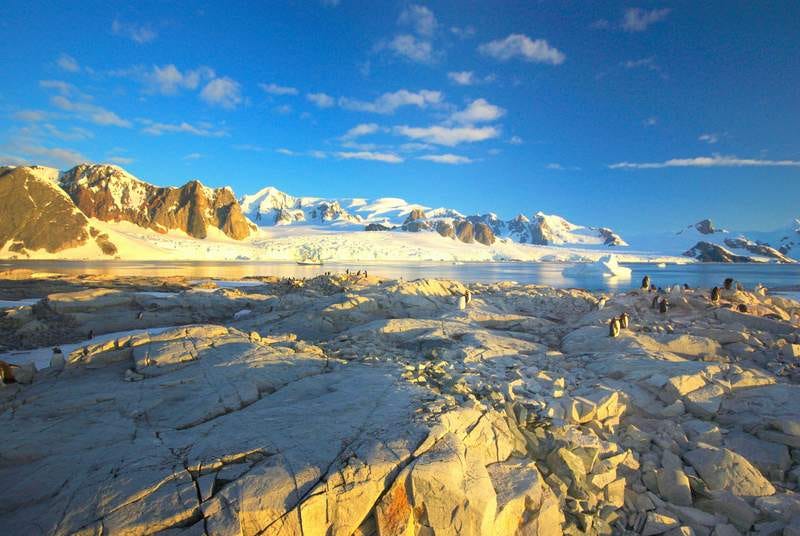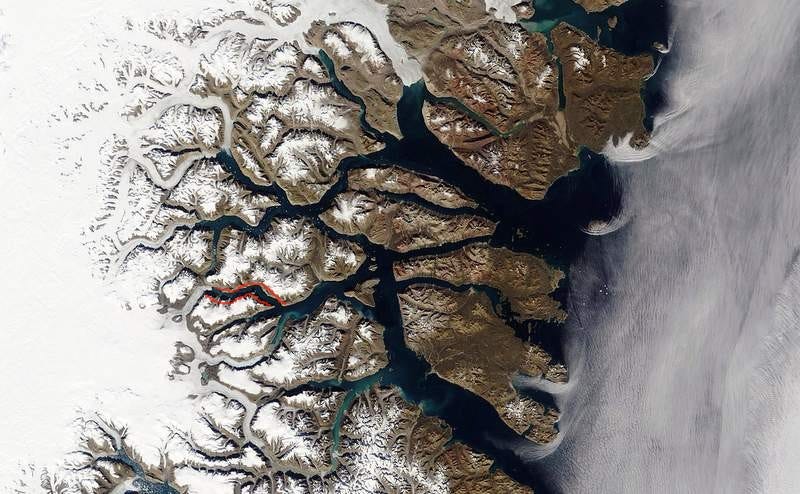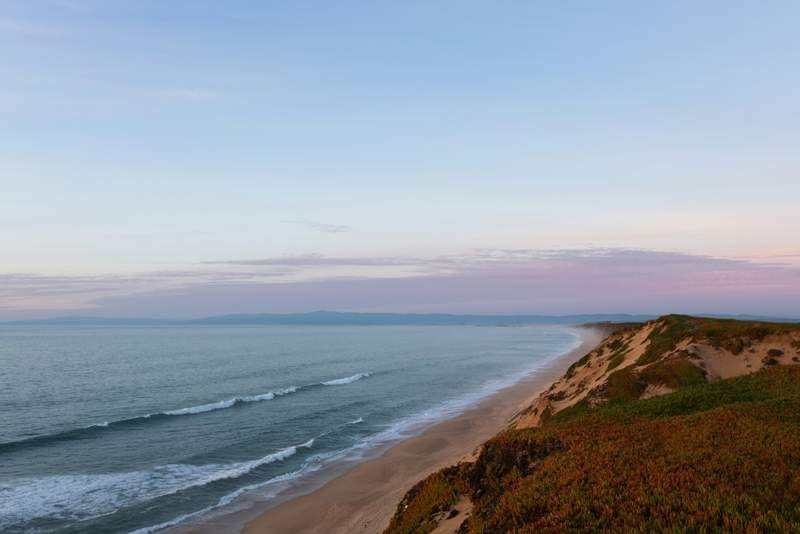For Nine Days, The Earth Rang Like A Bell
And other examples of the incredible power of moving water.
Hello! This is Everything Is Amazing, a newsletter about distracting oddities in science, like weird sky smells and nasal hallucinations.
This season, we’re looking at the world of wonders over our heads - and in researching a recent newsletter, I discovered the arresting notion that if all the air was squeezed out of a cloud and then what was left fell on you in one go, it would instantly kill you.
The math: cumulus cloud density is estimated to be around 0.5 grams per cubic meter. 1 km3 cloud = 1 billion cubic meters. One multiplied by t’other gives 500 million grams of water droplets or 500,000 kilograms or 1.1 million pounds - about 551 tons, a bit more than a fully-laden Boeing 747-400.
As someone with limited nautical or meteorological experience, the power of seemingly insubstantial water always catches me off guard.
(A few years back, I scared the living bejayzus out of myself by going for a swim in the sea when there was a big swell due to a distant storm. It was absolutely thrilling - right until one big wave picked me up, all 14 stone of me, and casually tossed me arse over breakfast into the shallows. I’ll not soon be forgetting how that felt.)
So this made me curious: what other marvels is water capable of, when it’s got a bit of momentum behind it?
1. That Time The Earth Rang Like A Bell
In September 2023, geophysicists across the world started picking up a very odd signal coming from the ground under their feet.
A seismometer in the Arctic recorded it. Another in Antarctica registered its presence. It could be detected everywhere - and it wasn’t hard to spot against the normal discontinuous background noise of our planet bending, cracking, heaving and erupting in fabulously complicated ways, because this was a single vibration frequency, as regular as a metronome.
For over a week, the Earth chimed like a struck bell. One pulse every 90 seconds, every hour of every day, for 9 days.
In seismology, the term for this is a USO: an Unidentified Seismic Object. And perhaps if this discovery had leaked into mainstream news in the way potential alien biosignatures tend to do, we’d currently be seeing a massive resurgence in popularity of the Hollow Earth ‘theory’, which claims (you guessed it) the Earth is hollow, it’s populated by aliens, and there’s an opening in Alaska that allows them to pilot their flying saucers in and out of it.
Instead, in the best tradition of modern science, researchers across the globe - 68 scientists from 40 institutions in 15 countries - joined forces to track down the signal’s source.
What they found was a geological event so commonplace that it occurs in at least half a million locations across the globe every year, but this time, by freak chance, it led to a truly remarkable outcome.
This is King Christian X Land in eastern Greenland’s - and outlined in red is Dickson Fjord, first surveyed in 1899.
On the 16th of September 2023, part of the glacier forming its back wall collapsed, plunging 25 million cubic meters of rock and ice into the waters of the fjord. The resulting cataclysmic backsplash of water - a megatsunami - was around 200 metres tall (as high as the main towers of the Golden Gate Bridge), and triggered a wave around 100 metres high racing across the fjord to smash against the other side of it.
This part of Greenland is visited by Arctic cruise ships, so it’s exceptionally lucky that none were in the area at the time.
(To illustrate the danger here: an island 70 kilometres away was consequently battered with 4-metre-high waves powerful enough to tear away $200,000 of infrastructure from an abandoned research station.)
So far, so dramatic. But then the waves refused to dissipate. They pounded back and forth across the fjord again and again, almost perfectly reflected by the other side and hardly losing any of their colossal energy.
The technical term for this is a seiche, pronounced “saysh” - a standing wave oscillating in a large body of water - and it’s a phenomenon frequently dangerous to human life, due to how it can defy the tide and seemingly come out of nowhere. (In 1844, one in Lake Erie breached a 14-foot sea wall and killed 78 people.)
For 9 days, this seawater sloshed back and forth like disturbed bath-water, transferring energy into the bedrock of the fjord with every impact against the sides of the fjord - and that regular 90-second beat rippled out across the whole world:
This collaborative international detective-work resulted in a paper published a year later, its lead author being Kristian Svennevig, a geologist at the Geological Survey of Denmark and Greenland.
Its conclusion: since the landslide was triggered by the melting glacier, and since that happened because of rising global temperatures due to climate change, this was a signal - and a warning - from our changing world that could be heard in every part of it.
(Hat-tip to ’s newsletter for first making me aware of this incredible event. And if you love earthquake science in general, go sign up for the newsletter.)
2. The Other Grand Canyon Nobody’s Ever Seen
If you’ve ever visited California’s Monterey Bay, a few hours of driving south from San Francisco, and looked out over the immensity of the Pacific - well, I’m sure you don’t regret it. I hear it’s lovely.
But how many of its roughly 4 million visitors per year know that beyond the surfers, scuba divers and whale watchers, they’re also in the presence of the second Grand Canyon of the United States?
Before we continue, a huge caveat regarding the above image: this is one of those kinds of underwater relief maps where the vertical height is exaggerated for effect, just like the gorgeous & evocative maps of the floor of the Atlantic created from data collected by Marie Tharp and Bruce Heezen, as I previously wrote about here.
But make no mistake, the Monterey Canyon really is a geological feature of massive scale. The Grand Canyon comparison is apt: at their deepest point, the Monterey Canyon’s walls are 1,700 metres (around 1 mile) high - and by the time it reaches the Pacific’s abyssal plain, it’s run out from the Californian coast for over 400 kilometres.
It’s not far off being as impressive as the Arctic’s Lomonosov Ridge - except this time, it’s right under the noses of millions of Californians, none of whom have never seen it, because of all that fun blue stuff that’s currently in the way.
Courtesy of the Monterey Bay Aquarium Research Institute and Scientific American, this is what they’d see if those thousands of metres of ocean hiding it from view suddenly drained away:
Perhaps sometime in the future, advances in deep-sea technology will allow for the underwater tourism equivalent of a Grand Canyon rim-to-rim trail? But for now, it’s something to marvel at from afar, and, if you’re a marine scientist, a useful highway into the deeper ocean.
But how did it get this way?
It’s tempting to copy-and-paste what we know about the Grand Canyon, and presume this is the flooded remnant of an ancient watercourse the size of the Colorado River. That would make sense, right?
This is in fact correct - if you remove the word “flooded”. This isn’t the mark of a river that once ran on land. It’s one that’s still down there, underneath thousands of meters of ocean water:
“Rather than flows of fresh (or at least salty) water, undersea rivers are slurries of silt and sand that cascade along channels on the seabed. Each particle tumbles through the water under its own weight. A new river starts on the continental shelf like an avalanche in the mountains, picking up speed and momentum as it moves until it flows like a liquid. Once started, an undersea river can flow for weeks and even months at a time, moving the same amount of sediment in one go that all the world’s land-based rivers transport in an entire year.
“The flows that come down them are more like snow avalanches or volcanic pyroclastic flows,” says [Dan] Parsons [a sedimentologist at the University of Hull].
This explains their ability to carve through sediment or even rock on the way down, with more than enough power to sever underwater telecommunication cables - while also providing a vital ecological service by transporting nutrients to the creatures in the deepest part of the Pacific.
Since the early 1980s, many other underwater rivers have been discovered via advances in sonar mapping, but first-hand study of them has remained difficult because of the technical difficulties and sheer cost of getting equipment that deep.
It’s only recent advances in remote sensing that have allowed scientists to look at what’s really going on - including the deployment of this BB-8-like “smart boulder,” designed to tumble along with the flow to measure its strength and see where it goes.
Yet more of these murky rivers (or to shift to a different medium, aquatic Chinooks, Mistrals and Sciroccos) seem to be unnervingly, explosively powerful:
“At the extreme end are what we call ‘canyon flushing’ turbidity currents,” says Josh Allin of Southampton University in the UK, who has been studying the Nazaré canyon [off the Portuguese coast]. “These are much more violent and are capable of eroding very large volumes of sediment – tens of cubic kilometres – from the canyon and transporting it out onto the deep ocean floor. They appear to occur on hundred- to thousand-year timescales, but they have never been directly observed and we know very little about their characteristics.”
I guess it’s understandable that as a terrestrial species, when we bother to consider the oceans at all we have our attention fixed on the surface, and generally assume that’s where all the action is, not down there in the crushing depths…
Oh, there’s so much to relearn here, quietly whispers an entire branch of science.
3. Thundersnow And Lightning, Very Very Frightening
(You’ll have that in your head for the rest of the day now. Sorry.)
In the early hours of the 4th December 2020, residents of the Scottish council area of Midlothian to the south of Edinburgh started ringing the police in a panic:
‘I think there’s been an explosion!’
Just before 5am, two enormous muffled bangs sounded over the city, triggering car alarms and startling many folk out of bed.
As reported by BBC News, one of them was Saoirse Morton, 19, of Leith:
"I heard what I thought was an explosion so I started looking for a factory nearby that could have exploded," she said.
"I just sat for 10 seconds in shock before checking on my pets. I was convinced something had exploded. I messaged some friends on Facebook and said something had exploded and they said 'no, no it's thunder and lightning' and started trying to convince me. I took some convincing."
What confused her and many others was that it was snowing at the time - thick enough to close schools and bridges for the rest of the day. And you can’t get a thunderstorm and a snowstorm at the same time - can you?
Also, it didn’t sound like thunder. None of the sharp flash-and-crash of a normal thunderstorm, more the dull ker-whumph! of something at ground level going up in a fireball not very far away.
The Met Office explained this curious effect:
“Interestingly, the snow contained within the thunderstorm acts to dampen the sound of the thunder. While the thunder from a typical thunderstorm might be heard many miles away, the thunder during a thundersnow event will only be heard if you are within two to three miles of the lightning.”
If Edinburgh residents had been lucky enough to see the lightning that triggered this thunder, they’d have seen a difference there too:
“It’s…captivatingly beautiful—lightning flashes take on a cerulean blue hue, and as they reflect off airborne snow, the light diffuses across the entire sky.”
That’s from
of the American Meteorological Society, who has a whole newsletter about this rare variety of thundery weather:Thundersnow seems like something every walker and outdoorsy person should know about. I’ve been caught out on the treeless expanse of the North York Moors during a normal thunderstorm, with flickering lightning getting nearer and nearer, and that was not something I’m eager to repeat. (Thankfully I remembered some of the right advice: squat down, hands on knees, tuck your head.)
But maybe the danger of thundersnow is its ability to catch you unawares, if - like me until recently, and perhaps like most folk? - you assume that if it’s snowing, you’re safe from a lightning strike.
Everyone knows that hurricanes are the true monsters of our weather, and to date they’re perhaps the ultimate example of what havoc warm water and airborne moisture can wreak.
(The world’s deadliest natural disaster was created by floods in China in 1931, killing millions of people - but that was partly triggered by rainfall from 9 (!) cyclones falling on land parched after a long drought, flooding an area of land the size of England plus half of Scotland.)
Nevertheless, none of us should be messing around outside when the far more common type of thunderstorm rolls in, because its power can still be brain-meltingly awesome.
A study published in 2019 looked at one giant storm using a telescope designed to study cosmic rays by detecting muons, charged particles created when incoming cosmic rays interact with particles in the Earth’s upper atmosphere. When something gets in the way as they head towards the ground, they lose energy - and as reported in Gizmodo, the researchers found a way to turn these fluctuations into an indicator of the voltage of a thundercloud:
A storm on December 1, 2014, led to a relatively enormous 2 percent decrease in the amount of muons that the experiment received. According to their methods, published in Physical Review Letters, this would be equivalent to a 1.3-billion-volt electric potential in the thunderhead.
This doesn’t refer to a single lightning bolt, but rather the strength of the electric field caused by positively charged water molecules carried by convection to the top of the cloud while negatively charged ice remains lower down. For comparison, most lightning bolts have 100 million volts of electric potential between their ends. Subway tracks carry less than 1,000 volts.
That voltage measurement is 10 times higher than the previous most powerful observed storm on Earth.
As the study’s co-author Sunil Gupta told LiveScience:
“Scientists estimated that thunderclouds could have gigavolt potential in the 1920s… But it was never proven — until now. The amount of energy stored here is enough to supply all the power needs of a city like New York City for 26 minutes. If you could harness it.”
If you’re thinking that’s an interesting proposal for the next stage of harvesting sustainable energy, alas - the world is still a long way from designing materials that could capture and store energy that powerful without instantly melting away, leaving everything nearby unprotected from the effects of a billion rampaging volts of electricity. Hard nope.
(There’s also the not inconsiderable question-mark around what happens to a thundercloud if we could strip it of its energy. Could such a thing alter rainfall patterns and create the potential for drought? If so, we’re back to the unforeseen consequences of reckless geoengineering and everything that might lead to.)
But those of you writing science fiction - do any of your cities of the future have extendable lightning-rods tall enough to stick into the clouds to gather lightning as a source of energy? Give it a go!
Images: East Greenland Terra/MODIS satellite image/Wikimedia; Bob Brewer; George McVeigh; Guillaume Merle; NASA Earth Observatory/Wikimedia; Javier Miranda.










You have the most appropriately named newsletter on Substack. Everything truly is Amazing! Thanks.
Story 1: This thing strangely happened during a Danish Navy tsunami exercise, the same Danish Navy that had just evacuated their own Danish Navy station on Ella Island, just hours before that Danish Navy was hit by the tsunami, but luckily, the Danish Navy vessel was then alerted to the flooding of their station by a passenger on a cruise ship in the area, incidentally a former Danish Navy man, such that the Danish Navy vessel was able to inspect the flooded Danish Navy station and take the photos documenting the event.